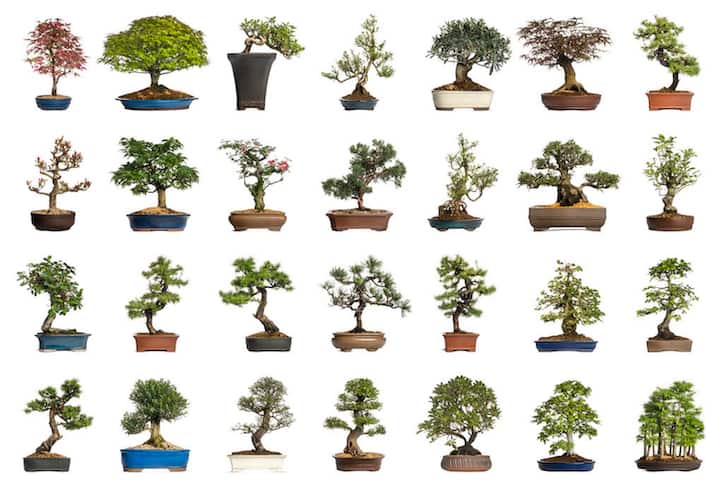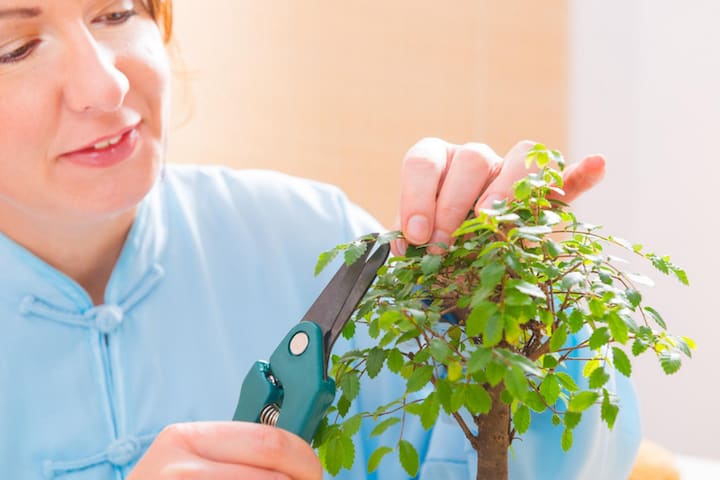A common question with bonsai enthusiasts is how long a bonsai tree can live. It’s not a clear-cut answer.
A bonsai tree can live up to 1000 years or even longer with proper care and maintenance. With improper care, a bonsai tree can die in as little as 2-3 months. In addition to soil, fertilization, humidity, pruning, and other factors, a bonsai’s lifespan varies by bonsai species.
For example, the Japanese maple can live up to 80 year, while the Chinese elm can live up to 50 years. Learn about the world’s oldest Bonsai trees.
Continue reading to get more in-depth into how long bonsai trees live and the factors that affect how long they can live.
How Long Do Bonsai Trees Live?
Bonsais are miniature trees that are grown for aesthetic purposes. They are usually kept alive by being watered regularly and fed with fertilizer. They can live for several hundred years but are usually cut down when they reach a certain age.
Bonsai trees tend to grow slowly, but some grow quickly. Bonsai trees normally take anywhere from 5 to 15 years to reach maturity. There are some exceptions though, such as the bonsai trees that were grown indoors. These trees may be ready to be planted out after 3 years.
Bonsai trees take years to grow into beautiful miniature trees. They need constant care and attention. They’re kept in perfect growing conditions. They have plenty of nutrients and are free of diseases. A study shows that bonsai trees live up to 25% longer than other trees that are the same species.
Don’t be fooled by the small size either. Their small size doesn’t mean they have shorter lifespans. Read more about the various bonsai size classifications.
Factors Affecting How Long a Bonsai Will Live
Bonsai trees need the right amount of care to grow properly. If you aren’t giving them the right growing conditions, they won’t live very long (hundreds of years).
Bonsai Tree Species
Bonsais are plants that are grown into miniature versions of full-grown trees. You need to know how to grow them properly, because if you don’t do it right, then your bonsai won’t last long.

Outdoor species should be grown outdoor environments, while indoor bonsai species are meant to be grown indoors.
Some examples of various tree species to select from. Choose cedar, cypress or pines for evergreen species, and cherry, beech or maples for deciduous species.
Ficus bonsai are some of the oldest living plants on Earth and some have lived more than 1,000 years.
Learn about the different tree species and what the different Bonsai trees symbolize.
The Environment
To ensure your bonsai grows well and stays strong, make sure you replicate the environmental conditions of its natural habitat. One of the biggest factors is good humidity levels.
You should use a saucer or other type of humidity tray to help create this environment. There are many different types of humidity trays available online.
Check out a tray like this:
If you have many bonsai trees and other houseplants, plant humidifiers will be more efficient.
A saucer made out of plastic or ceramic material is a great gift for any occasion. You can use these gifts as party favors or hostess gifts.
General Care for Healthy Bonsai
Trees need proper watering, soil, fertilizer, and pruning to survive. It’s important to give your bonsai all the elements. Watering is one of the most important things you can do to keep your bonsai healthy.
When watering your bonsai, always remember to water deeply, while allowing excess water to drain properly. This will prevent root rot and disease.
Make sure you water your bonsai at least once every two weeks during the spring and summer months. During winter, you should only water your bonsai about once per month.
A good bonsai soil mix also plays an essential role in keeping your bonsai healthy and flourishing. The best kind of soil for a bonsai is loam soil. Loam soil has a high percentage of organic matter which helps hold soil moisture.
Keeping up with pruning keeps them looking great and healthy. Prune your bonsai regularly, so you can maintain their shape and appearance. Always cut off dead branches before they get too large. Never let your bonsai roots get overgrown either.
These shears help to trim the tree and keep it looking good.
Read the in-depth Bonsai Tree Care Guide to learn more about how to care for bonsais.
Trimming For Optimal Lifespan of Bonsai Trees

A bonsai tree grows slowly but steadily. It doesn’t stop growing because it’s been trimmed too much or too little.
Trees need to be pruned regularly to help them grow. Pruning with fingers is more natural than using scissors. Conifers do better with finger pruning while deciduous trees do better with scissors.
Trees need to be trimmed regularly to ensure that they are healthy. Healthy trees produce more leaves than unhealthy ones. Trimming unhealthy branches and leaves allows the rest of the tree to thrive.
Sealants can be used on the cut branches to protect trees from insects and disease. Wax sealant can be used to preserve conifer trees, and tar-based paint on deciduous trees.
Bonsai Tree Pests And Diseases
Bonsai trees are sensitive to pests and diseases. They should be treated early before they get sick. When treating pests, try to catch them early. If you see pests on your bonsai, remove them immediately.
You should also check your other indoor plants for bugs and diseases, as they can transfer to your bonsai trees easily.
Bonsai Tree Lifespan Final Thoughts
Bonsai trees can last a lifetime if cared for correctly. In fact, some bonsai experts claim that there are bonsai trees that have lived for centuries.
No matter the period of time or variety of tree, the key to having a long life span is maintaining a healthy tree for proper growth.
Learn more about bonsai trees with these articles:
- Best Fertilizer for Bonsai Trees
- How Long Does It Take For a Bonsai Tree to Grow?
- Great Bonsai Books to Read
- Complete Guide to Bonsai Tree Care





